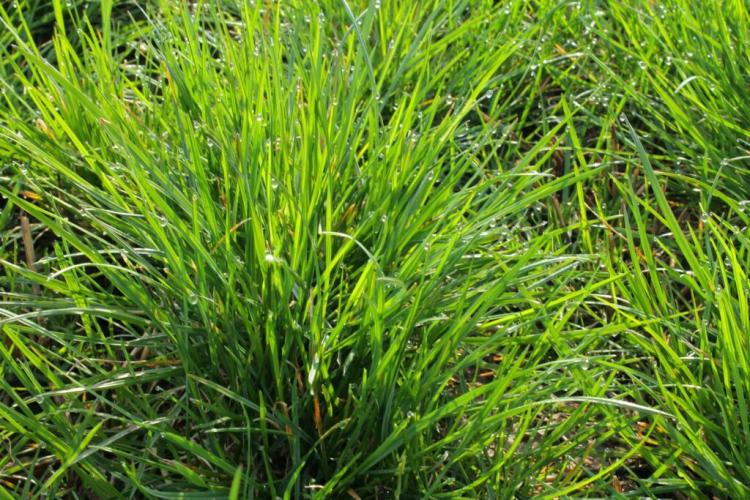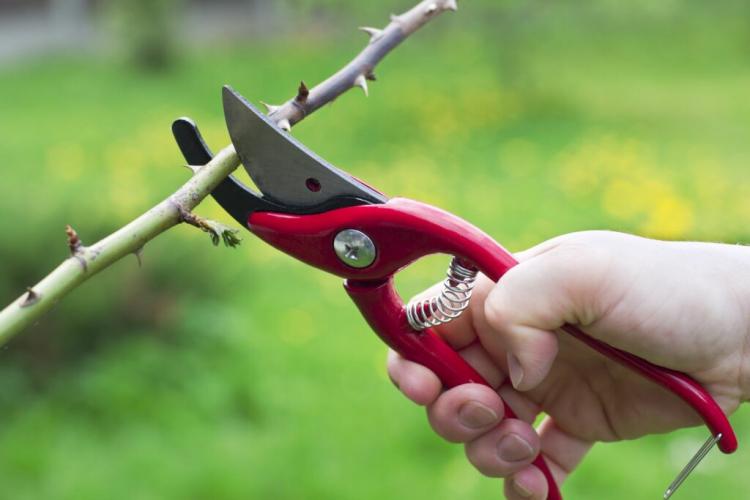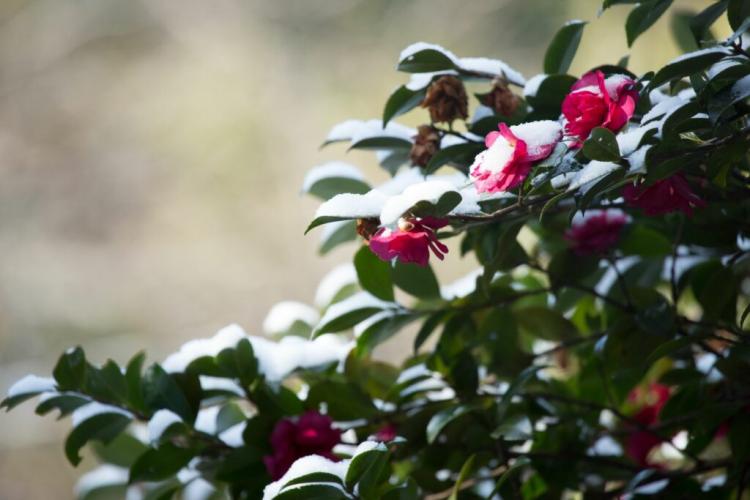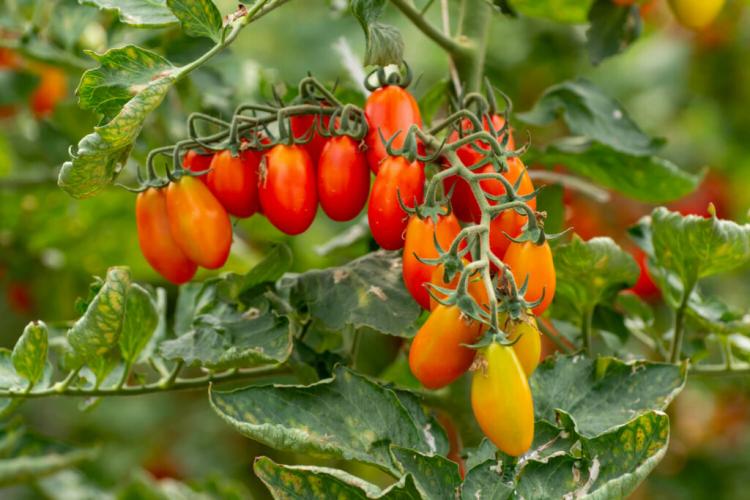Lolium Perenne: The German Ryegrass Should Be In Your Lawn
The German ryegrass (botanical: Lolium perenne) is one of the most frequently used lawn grasses. We present everything you need to know here: From the properties to the use of Lolium perenne for lawns in the garden.

The German ryegrass is contained in many lawn seed mixtures [Photo: P. Qvist / Shutterstock.com]
The German ryegrass ( Lolium perenne ) is originally native to Europe, as far as the foothills of the Himalayas and North Africa, and can be found in many other parts of the world as a new citizen (neophyte). It has many properties that make it an almost perfect lawn grass and, beyond that, makes no special demands on its environment. It is therefore comparatively easy to care for and it is hardly surprising that it is used successfully as an all-round talent in many seed mixtures for lawns. In this article we would like to introduce you to Lolium perenne , which is an important part of our Plantura Premium lawn family, in all of its green facets.
Lolium perenne: origin and description
Table of Contents
Like most lawn grasses, Lolium perenne belongs to the sweet grasses (Poaceae). Its original home is roughly in Europe and North Africa. Today, however, it can be found in all parts of the world because of its good properties. It loves nitrogen-rich, medium-moisture soils that can be lightly compacted.
As the species name perenne (lat. “Eternal”) suggests, the German ryegrass is perennial. So it doesn’t just live for one summer, it hibernates and delights us for many years. It grows quickly and in small clusters called clumps. Depending on the variety, the German ryegrass has more or less strong runners. These runners arise at the base of a plant, move away from it above ground and then root in another place – a new grass plant grows there. This property makes Lolium perenne very valuable in lawns, because it closes holes and gaps quickly and reliably before weeds can spread. This is exactly why it is included in our Plantura reseeding, so that your thinned lawn shines again after a short time. We rely on particularly well-growing varieties of ryegrass, which we will present to you in more detail below.
Properties and uses of German ryegrass
For a quick overview, we have briefly summarized the properties of ryegrass and then briefly discusses its use.
What are the properties of Lolium perenne?
The following table shows the most important properties of Lolium perenne .
| The German ryegrass in brief | |
|---|---|
| features | Very regenerative because it shoots runners, dense growth in clumps, leaves are glossy green, red-violet base |
| Expectations | Adequate supply of nutrients and water, normal soil |
| Durability | High to very high, very good ability to regenerate damage |
| use | Sports and play lawns, reseeding lawns, lawn repairs and various other mixtures |
| Germination time and development | Very fast germinating (7-14 days), competitive growth, rapid development |
| Minimum cutting height | Depending on the type, 6 to 30 mm |
| particularities | Slightly susceptible to frost, some varieties susceptible to snow mold |
The German ryegrass germinates and grows quickly and has a rich green color. This beautiful color even makes it possible to use it in elegant ornamental lawns. Sown in lawns it tolerates mowing and walking very well and grows thick and fine-leaved. However, it is slightly sensitive to frost. Because a large part of the small tufts of turf can be lost in severe winters and at high altitudes, reseeding is recommended every few years on most areas in order to maintain the dense growth and regenerative capacity of a lawn.
In order to grow well, the German ryegrass needs normal to good soil and a good supply of nutrients. It also loves a humid, vigorous climate and mild winters, which are increasingly common in Germany. On compacted, constantly wet soils, some varieties of Lolium perenne can be affected by snow mold, a fungal disease. Soils with corresponding properties should be loosened particularly thoroughly and deeply before sowing and loosened with permeable aggregates such as sand and ripe compost.
Expert tip: In order for Lolium perenne to feel comfortable with you, you don’t need particularly good soil or a particularly mild climate. By primarily organic lawn fertilization, for example with our Plantura organic lawn fertilizer, your soil can be improved during and after sowing so that the ryegrass grows densely and without diseases. If you are affected by very harsh winters, reseeding the ryegrass will help. Turf reseeding is regularly necessary for many locations and represents a quick, effective regeneration of the lawn.
How is Lolium perenne used?
Because of its persistent growth, Lolium perenne is used both as fodder grass for grazing animals and in mixtures for house lawns or for landscaped lawns. Because of its high regenerative capacity and its lush green look, it is also included in mixtures for fine ornamental lawns and sports field lawns. Hardly any lawn can do without this all-rounder among lawn grasses. However, different varieties are used depending on the desired properties and prevailing conditions. Some particularly good strains will be presented to you in the course of this article.
Lolium perenne and special types of grass are also part of our Plantura play and sports lawns as well as our Plantura dry lawns and Plantura shadow lawns because of their many good properties. Because the regenerative capacity of the grass is so great, it is also used in our Plantura grass reseed and the Plantura lawn repair.
By the way: A relative of the German ryegrass, the annual ryegrass ( Lolium multiflorum ) is a dreaded and undesirable weed in lawns. As soon as you spot it, you should tackle this ryegrass on the lawn. It can be recognized by its light green color and often forms clusters that spread further and further and displace other grasses.

Annual ryegrass is not wanted in the lawn because it usually dies in winter [Photo: Yesim Sahin / Shutterstock.com]
Different varieties of Lolium perenne
Although the German ryegrass already has various good properties, it has been successfully improved by breeders for years. More than 100 cultivated varieties of Lolium perenne have come together, which have somewhat different properties than the original species due to their breeding process. They are also used in mixtures such as our Plantura Premium lawn seed mixtures in order to obtain an optimally adapted, healthy lawn. We would like to briefly introduce a few of the particularly good varieties to you here:
Lolium perenne ′ Adagio ′:
Fast growing, therefore frequent mowing is necessary. Sufficiently hardy and still green in winter. Forms fine leaves and a dense scar. Good competitiveness against weeds. Medium durability. Good suitability for sports and play lawns and lawns for use.
Lolium perenne ′ Barolympic ′:
Medium fast growing and medium green. Forms an extremely dense sward and displaces weeds. Very hard-wearing. Extremely good variety for lawns for use as well as sports and play lawns. Also suitable for ornamental lawns.
Lolium perenne ′ Ceretec Centurion ′:
Grows medium-fast, even at lower temperatures, making it competitive with weeds and moss. Good regenerative capacity, forms a very dense scar. Also dark green in winter, very fine-leaved, also tolerates deep pruning up to 12 mm. Tolerates drought. Use in sports field turf, universal mixing partner.
Lolium perenne ′ Corsica ′
Grows more slowly, so mowing less often. Medium to dark green, extremely good regenerative ability due to many strong runners. Also seals larger holes in the lawn. Suitable for very deep cuts. Forms a very dense lawn carpet. Very hard-wearing. Use in fine golf turf, re-sowing and repairing turf; universal use. The ‘Corsica’ variety is contained in many of our Plantura Premium lawn seed mixtures.
Lolium perenne ′ Esquire ′:
Also grows in cooler temperatures, which means that it starts early in spring and continues to grow for a long time in autumn. Strong competition against weeds. High-quality optics thanks to fine stalks, rich dark green, even green in winter. Resistant to many lawn diseases. Growing densely. Not very regenerative. Fast growing, therefore frequent mowing is necessary.
Lolium perenne ′ Eventus ′:
Medium fast growing and medium green. Appealing color even in winter. High grain density and good weed suppression. Very hard-wearing and therefore well suited for use as well as sports and play lawns, but also ornamental lawns.
Lolium perenne ‘New Orleans’:
Medium fast growing. Very good regenerative capacity due to strong runnings, therefore often used in mixtures for sports fields or reseeding or lawn repair. Dense growth and attractive, medium green color. Suitable for deep cuts. Universal application in many lawn-seed mixtures, for example, sports and play lawns. The ‘New Orleans’ varieties are included in many of our Plantura Premium lawn seed mixes.
Lolium perenne ′ Shorty ′:
Medium-fast growing, light to medium green. Forms sufficiently dense sward and is sufficiently competitive against weeds. Appealing color even in winter. Hard-wearing, therefore well suited for use lawns and play and sports lawns.

Particularly suitable varieties of Lolium perenne are often used in lawn seeds [Photo: VIRTEXIE / Shutterstock.com]
You Might Also Like Will Muriatic Acid Kill Grass?
Conclusion: why should Lolium perenne not be missing in any good lawn?
The German ryegrass has many excellent properties that make it invaluable in all lawn seed mixtures in the home garden:
- Very cut compatible and resilient
- Strong self-regeneration
- High-quality, fine-leaved and dense optics
- Rapid germination ensures rapid seed emergence and rapid weed suppression in mixtures such as Plantura lawn reseeding or Plantura lawn repair
- Competitive growth with strong runners can be observed, for example, using our Plantura play and sports lawn or our Plantura shadow lawn
- Comparatively high drought tolerance, visible for example in our Plantura dry lawn
In summary, it can be said that Lolium perenne should be included in all high-quality seed mixtures for house lawns. The species already has very good characteristics by nature, which are clearly visible in all normal locations. Through the skillful use of further developed varieties, an optimal adaptation to the respective location can be achieved. This way the grass always shows its best, healthiest and greenest side.
Expert tip: Some manufacturers offer mixtures for house lawns that only contain Lolium perenne. Although the German ryegrass has many good properties, it is unfortunately not suitable as a soloist! Every lawn consists of grasses with different properties, and Lolium perenne only shows its qualities in combination with other, more step-resistant, hardy, and drought-compatible grasses. Therefore, the rule of thumb applies: Steer clear of cheap mixtures that only contain Lolium perenne! An exception is of course lawn reseeding, which is only used to replace the lost German ryegrass in a lawn.





